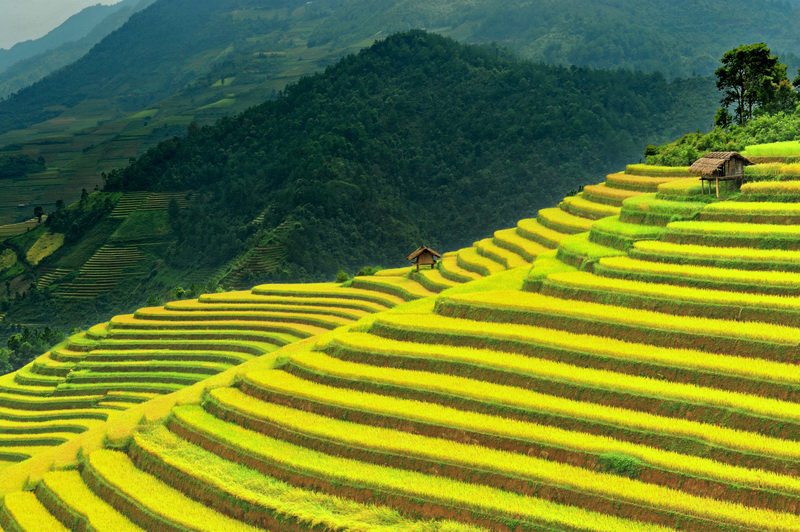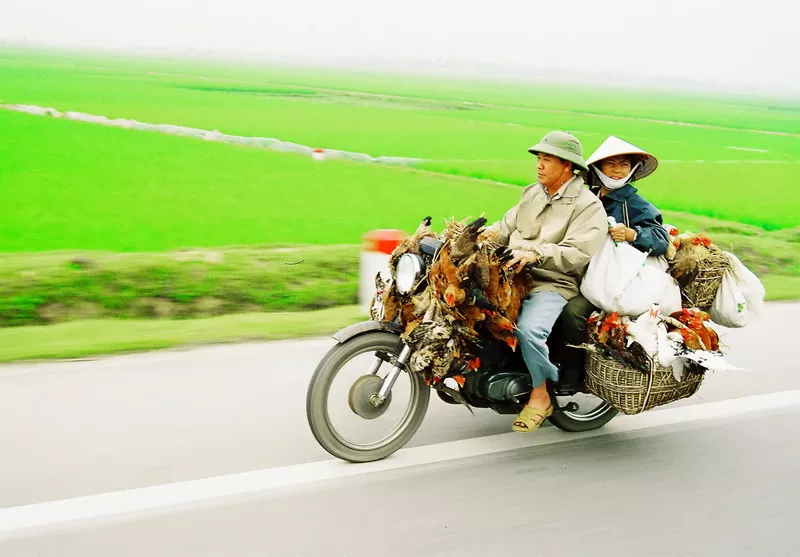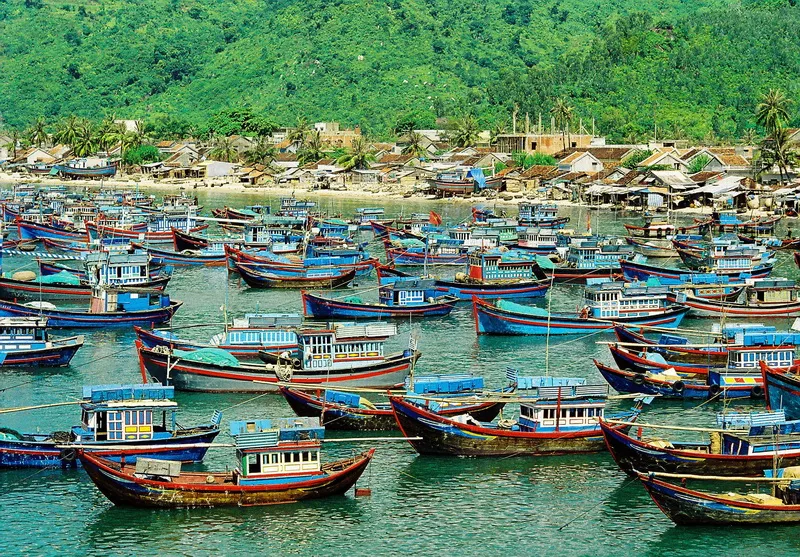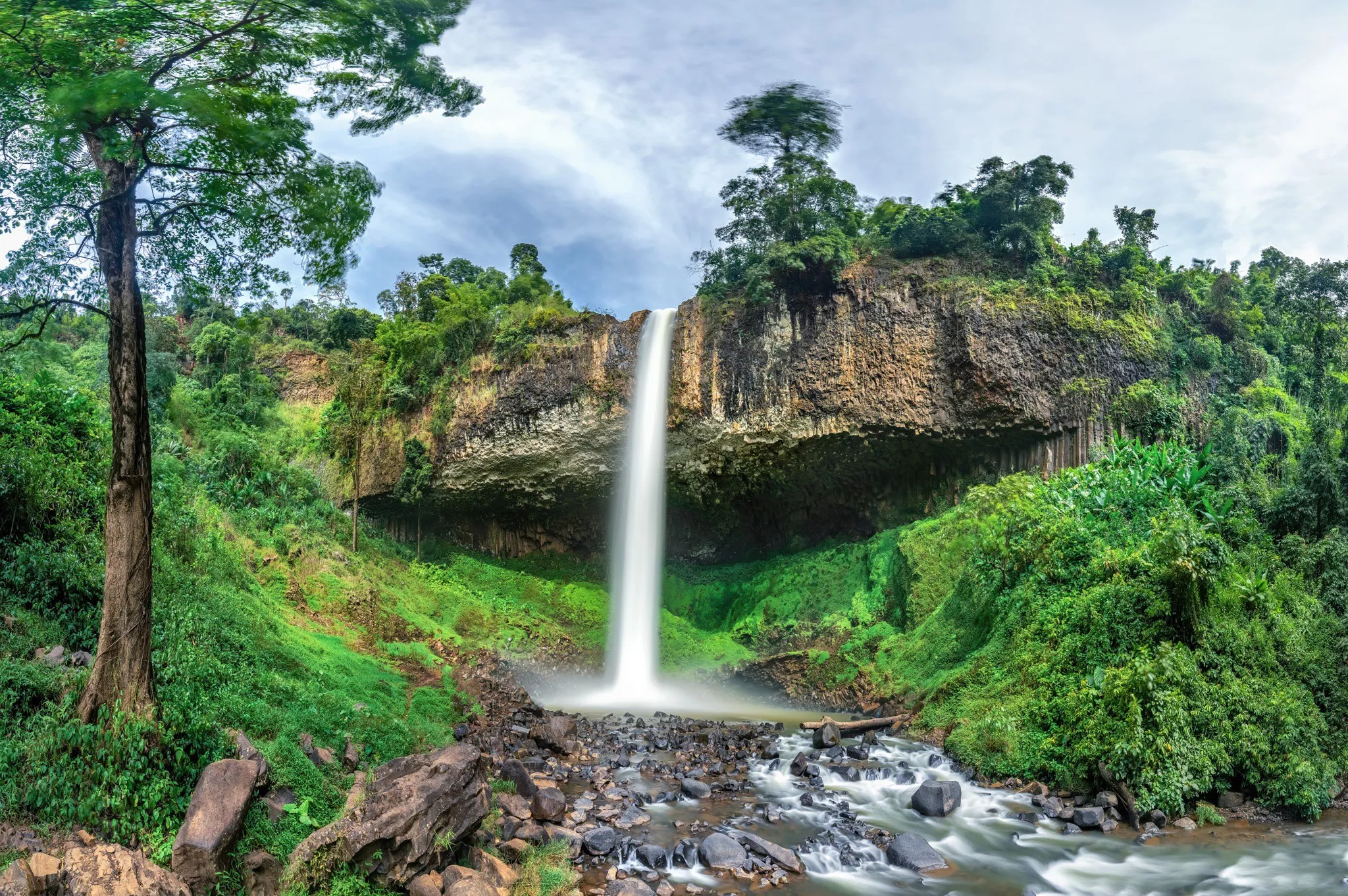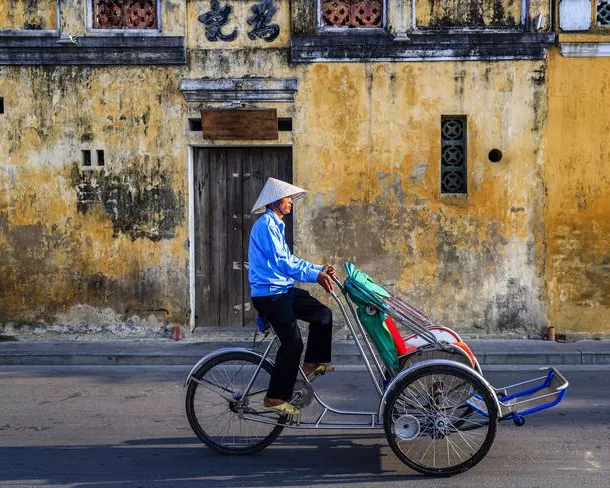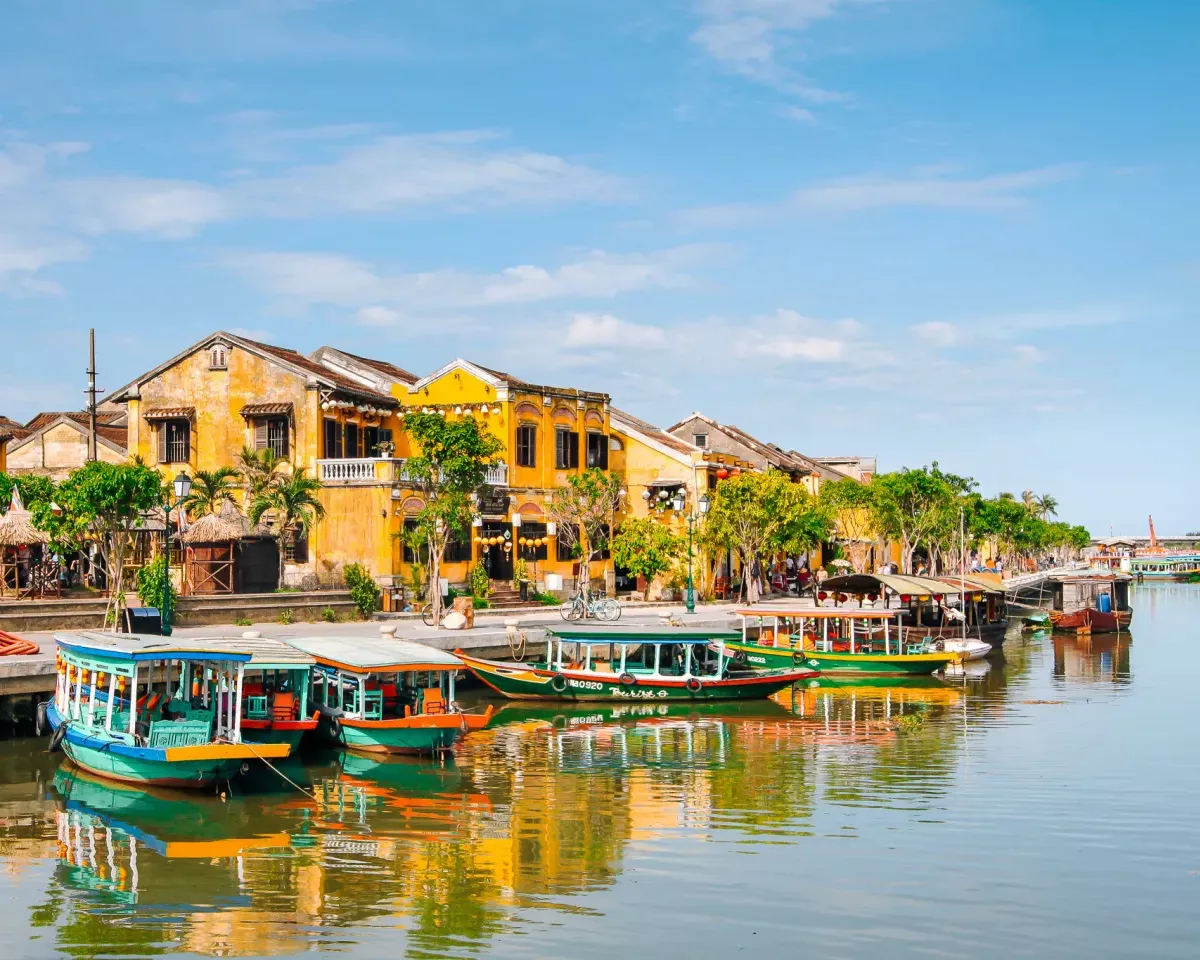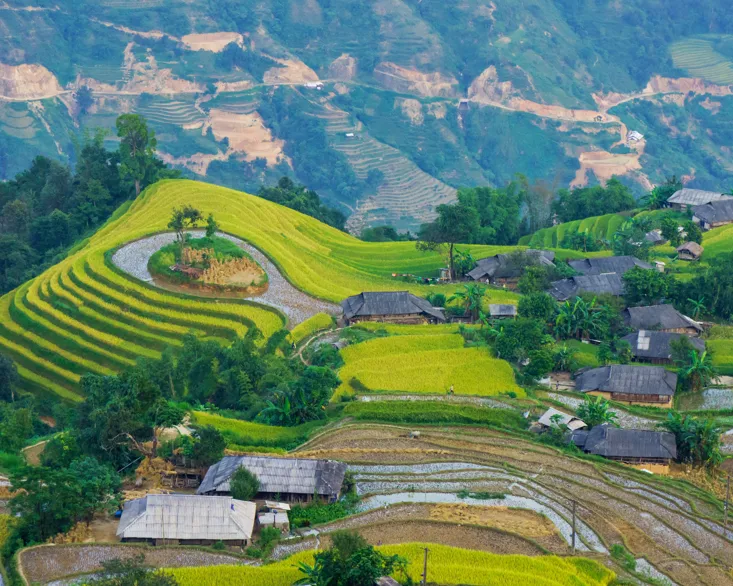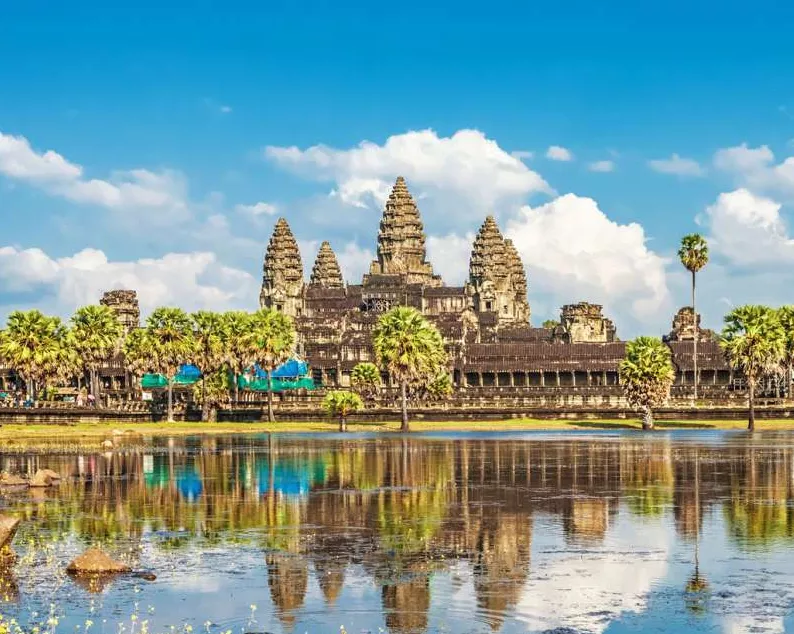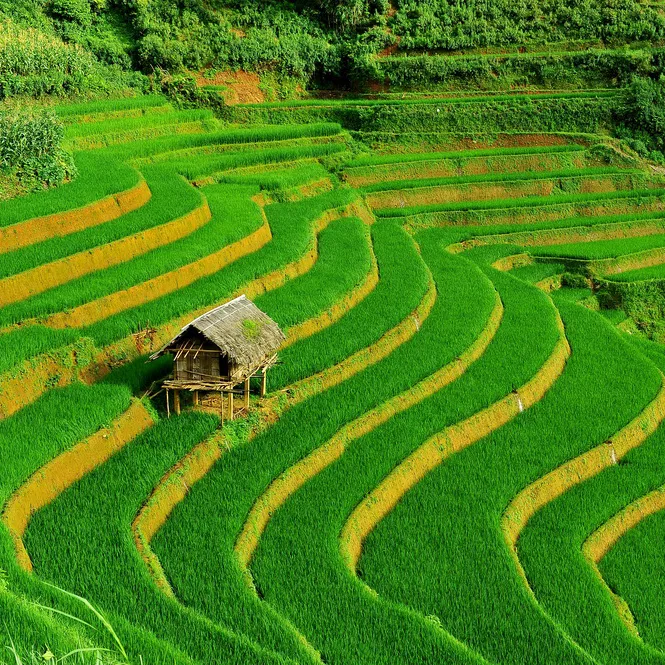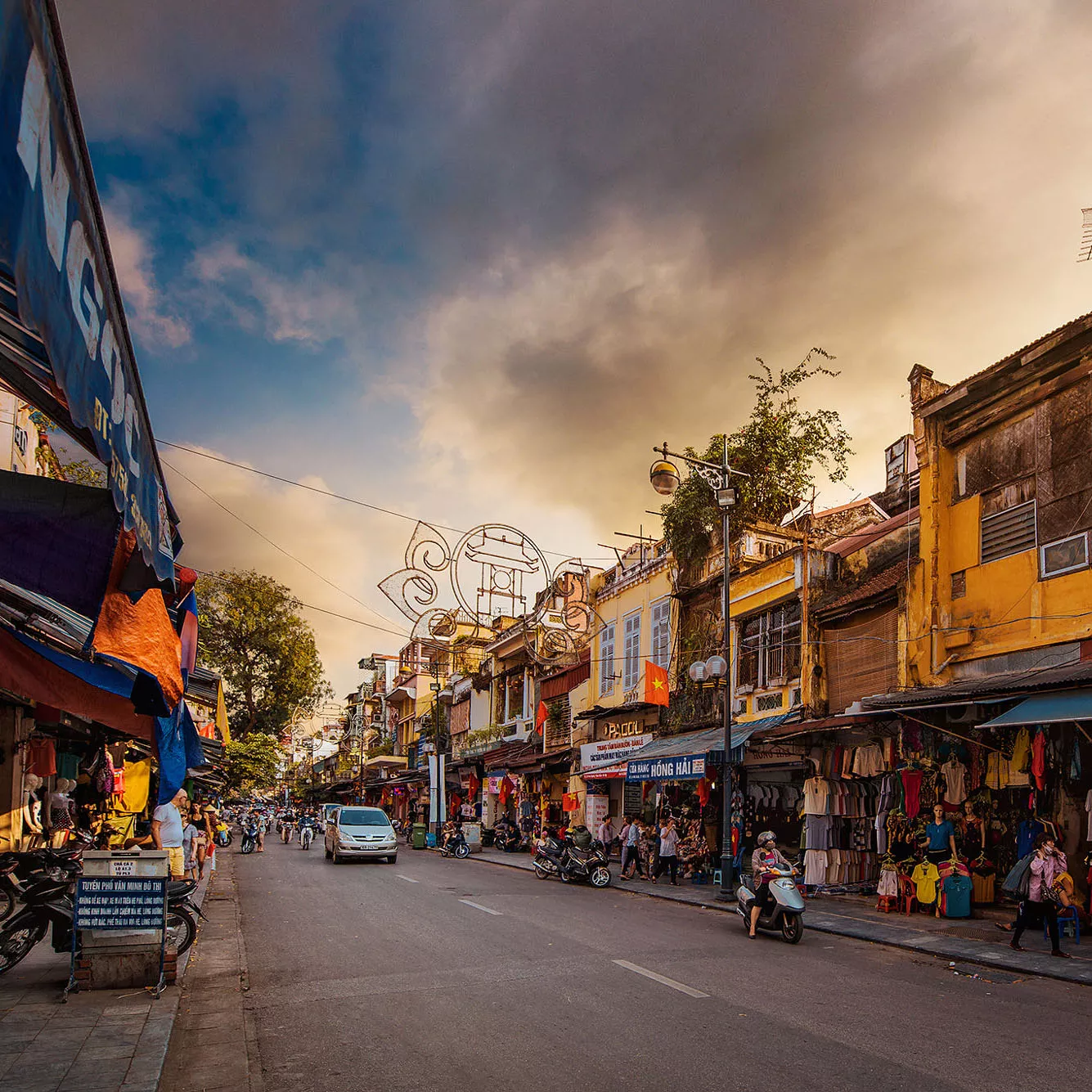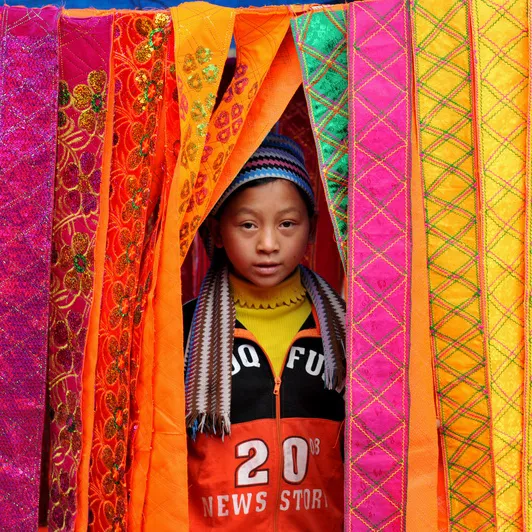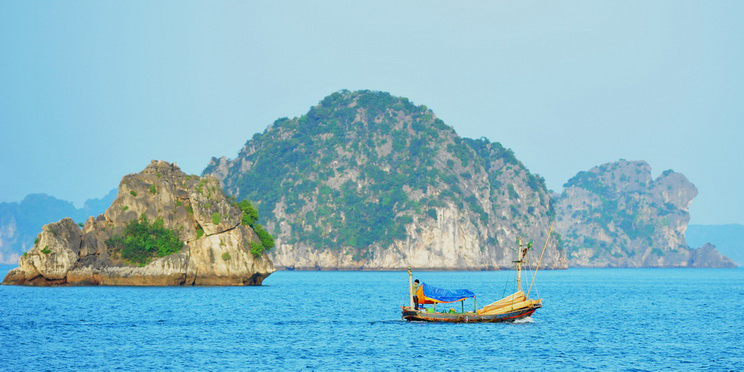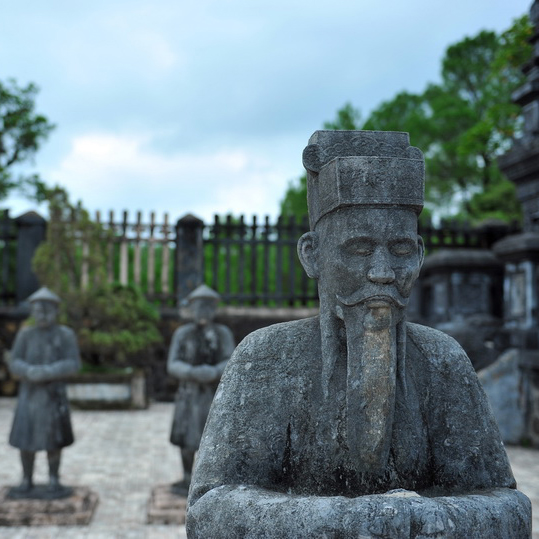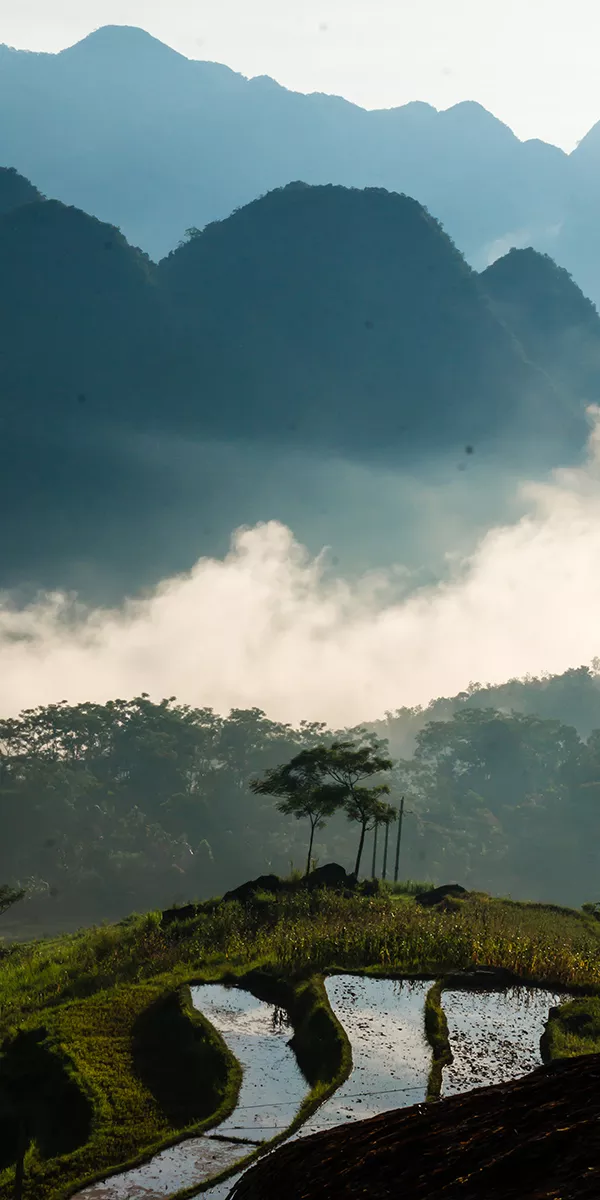Vietnam Travel Itinerary
Specialist of Destinations, Activities, Tips, Tours to Vietnam and Indochina
WHY VIETNAM?
Tourist information about Vietnam has been widely posted online and in travel forums for those falling in love with this charming country, and if you ask for accuracy, here is Vietnam Travel Guide 2024 insisted.
COUNTRY
Vietnam is gifted with marvelous attractions of nature, culture, and history. Do you love beaches and islands? Go to Halong Bay! Are you a history buff? Check in Hue Citadel and Hoi An Old Town. Are you interested in mountain trek and hill tribes? Discover the Northern Vietnam. What about a real adventure? Go to Phong Nha – Ke Bang National Park. Love the countryside lifestyle and green beauty? Let’s travel to Mekong Delta. Of course, these are just outstanding examples for you to know that Vietnam itinerary is great!
PEOPLE
Vietnam is a foreigners-welcome country resided by adorable people. The Vietnamese are so awesome and friendly that you can expect to be guided by the pleasant locals. They are pleased to direct you a way to a destination, tell you some to-do or not-to-do tips, take pictures with you, and help you to take pictures if you ask for help. In a local restaurant or eatery, you can try eating like the locals by using chopsticks, and one of the greatest tips is to enter the site frequently visited by the local foodies. You might also want their help to cross a street full of motorbikes, then don’t be shy.
FOOD
Vietnamese food is absolutely delicious and diverse. You will be flooded with food choices for breakfast, lunch, and dinner in this Indochina corner. It’s super easy to come across a street vendor that is selling Vietnamese sandwiches (Banh Mi), Pho, beef noodle soup (Bun Bo), rice vermicelli served with pork bone (Hu Tieu Xuong), sticky rice, and more. A walk along the local streets of a famous city like Saigon will please you with various things to eat at any time of the day. What’s more, the local beverages are unique, like egg yolks in coffee in Hanoi.
VIETNAM DESTINATIONS
The beautiful S-shaped country owns dozens of praiseworthy attractions scattered from the North through the Central and to the South. Also, the friendly residents, traditional culture and values, and delicious food are unbeatable scores, which win the visitors’ impression and nice comments. Vietnam is called a hotspot for beach lovers, thrill-seekers, and foodies who might bring a certain expectation about the destination, which has been fulfilled at best. While Hanoi has managed to preserve the old-style vibe despite economic growth, Ho Chi Minh City serves an innovative busy edge, and the UNESCO-protected Hoi An Old Town can keep its tranquil charm. Along with that, the country is blessed with natural wonders and the precious Mekong Delta. All make it a truly magical country. Read on for a full travel guide before planning your Vietnam tours.
Northern Mountain Area
Northern Vietnam is famous for the mountain destinations, which are perfect for adventurous souls or thrill-seekers. The country owns spectacular mountain ranges, of which some areas are inhabited by the ethnic groups who preserve their traditions, costumes, and lifestyle. You might address more than ten choices, but the list of five can narrow down the bests. For a perfect trip to northern Vietnam, Sapa ranks first. In the early 20th century, Sapa was run by the French as a place of retreat. Nowadays, Sapa Tours attract visitors to the French-style buildings, the ethnic culture of the Hmong and Dao tribes, etc., and especially the excellent Sun World Fansipan Legend. Next, Ha Giang is the northernmost province of Vietnam, which preserves some of the best mountainous views through the imposing Ma Pi Leng Pass. Other highlights of Ha Giang are the ethnic Dong Van Market, Dong Van Karst Global Geopark, Hoang Su Phi terraced rice fields, and some ethnic festivals taken throughout the year. Also included in the list of the best attractions in northern Vietnam are Mai Chau, Ba Be National Park, and Cao Bang. Mai Chau offers an idyllic rural view of the stilt house, ethnic villages, rice fields, etc. while the giant Ba Be National Park lets you discover the caves, waterfalls, valleys, and lakes. Ba Be has an untouched nature and serves the “green lungs” of northern Vietnam. When talking about Cao Bang, one cannot help mentioning the astonishing Ban Gioc Waterfall, the interesting Nguom Ngao Cave, and the extraordinary Thang Hen Lake. It’s no doubt that the north of Vietnam offers the natural highlights of mountains, lakes, caves, valleys, and waterfalls that meet nature lovers’ expectations. Pull out the Vietnamese map, check the northern areas, and choose the names to see. Per the crowd’s suggestions, Sapa, Ha Giang, Mai Chau, Ba Be, and Cao Bang make the top five, but of course, you can make your own list.
VIEW VIDEORed River Delta
With the ideal potential for tourism, the Red River Delta is a promising land with a 620km coastline dotted with gorgeous beaches and impeccable seascape. From Hanoi, it’s feasible to access the legendary Halong Bay, the must-see destination in Vietnam of all decades. Right in the capital of Hanoi, there stand out numerous historical attractions. Here are the outstanding names: Hanoi Old Quarters, Thang Long ancient capital, Ho Chi Minh Mausoleum, One-Pillar Pagoda, Temple of Literature, Ngoc Son Temple, Tran Quoc Temple, etc. If you go further around 100km from Hanoi, the amazing Ninh Binh – Trang An Scenic Landscape Complex will convince you of the ultimate ecotourism. Besides the attractive places of interest, the Red River Delta area is known for the colorful festivals of Vietnamese that are often held spiring, after the Lunar New Year Festival. The festivals, activities, and rituals reflect the locals’ long-lasting beliefs and traditions. There have been tours run in the Red River Delta region, which you can choose to visit the Bai Dinh Pagoda – Trang An Tourist Site, Tam Dao, Yen Tu Pagoda, etc. All in all, this region consists of 10 provinces and cities: Bac Ninh, Ha Nam, Hanoi, Hai Duong, Hai Phong, Hung Yen, Nam Dinh, Ninh Binh, Thai Binh, and Vinh Phuc. Besides the destination highlights, the region is known for the iconic specialties such as the Ninh Binh goat meat – fried rice, Hai Duong green bean cake, Vu Dai Village stewed fish, etc. There are even grand tours to discover the 10 provinces and cities of the Red River Delta, which often take around 5 days 4 nights. The grand Vietnam tours are characterized by colorful festivals and outstanding attractions. While Ha Long Bay is a must-see in Quang Ninh district, Cat Ba – Lan Ha Bay is a natural gem of Hai Phong, and Tam Coc is the unmistakable highlight of Ninh Binh.
VIEW VIDEOCentral Coastline
Vietnam Central Coastline or South Central Region consists of eight provinces: Da Nang, Quang Nam, Quang Ngai, Binh Dinh, Phu Yen, Khanh Hoa, Ninh Thuan, and Binh Thuan. Sounds famous? Each of these eight destinations comprises numerous attractive places besides the rich tourism highlights of the Cham cultural heritage, food, and architecture. The general characteristics of this region are backed by the magnificent Truong Son Mountain Range and facing the giant East Sea. Its topography is quite complex, featuring the combinations of the hills, the mountains, the forests, and the sea, which result in various wonders, beaches, and landscapes. They are the ideal conditions for the region to grow the focus on island-sea tourism. Let’s take Da Nang first as the city is one of the biggest magnets attracting tourists nowadays. Da Nang Beach was voted as one of the most beautiful beaches on the planet by Forbes. Next, the reputation of Nha Trang – the queen beach city in Vietnam, has been enchanting generations of beach fans and seafood lovers. What’s more, Phu Yen with the 190km coastline and the mountain-beach mixture creates the pristine bays and lagoons. Along with that, Cu Lao Cham (Quang Nam) is the not-to-miss highlight in any talk about island tourism. And if you’re interested in the age-old heritage, let’s go to the UNESCO-protected sites of Hoi An Old Town and My Son Sanctuary. Each of these two heritages provides interesting back-in-time trips, which are precious and unique. Hoi An Old Town is often visited by domestic and foreign tourists who all appreciate the old charm, peace, and priceless cultural values preserved. Meanwhile, the historical relic of My Son Sanctuary could teach you about the lost capital, the Cham architecture, the Hindu temples erected between the 4th and the 14th centuries, and what the 1600-year-old ruins look like, etc. Last but not least, check out Phan Thiet the beach city (Binh Thuan) for the best beach vacation, around 180km from Saigon.

Central Highland
Vietnam Central Highlands or “Tay Nguyen” includes five provinces of Lam Dong, Kon Tum, Gia Lai, Dak Lak, and Dak Nong, which feature the mountainous and forest topography. The region has conditions for developing ecotourism and adventure tours. It is the land of waterfalls, jungle, and coffee plantations. The green tourism values of the Central Highland lie in the protected national parks namely Yok Don, Chu Yang Sin (Dak Lak), Chu Mom Ray (Kon Tum), Kon Ka Kinh (Gia Lai), and Bidoup – Nui Ba (Lam Dong). Outstandingly, being gifted with the favorable weather condition, Da Lat City (Lam Dong) is known as the best destination for relaxation and short-day tours from Saigon. Numerous young backpackers, groups of friends, companies, couples, etc., travel to Da Lat to enjoy the fresh air, cool climate, and beautiful green view of the vast forests and mountains. People love spending weekends in Da Lat – the City of Love, City of Flowers, or the “Little Paris” (“Le Petit Paris” in French). Besides, it’s a trend that many couples like taking pre-wedding photography in Da Lat as the city is so beautiful, fresh, and romantic that meets all requirements for wedding celebration and even honeymoon vacation. What’s more, the Central Highlands might attract other guests via the diversity of culture, ethnicity, tradition, and historical relics. Tourists can expect to experience a homestay in the ethnic villages, join the campfire together with the ethnic people, communicate, and enjoy the food of the highlands. It’s beautiful to tour Vietnam’s Central Highlands all year round, but the best months are from November to April, when the region is perfumed by the coffee harvest season. Attractions to see in this region are the impressive waterfalls (Dray Sap Waterfall, Dray Nur Waterfall, Datanla Waterfall, etc.), lakes (Bien Ho, Ayun Ha Lake, Xuan Huong Lake, etc.), Valley of Love, LangBiang Mountain, Ta Dung Nature Preserve, Nhon Hoa Elephant Village, and Yok Don National Park.

Mekong River Delta
Located nearby Ho Chi Minh City (aka Saigon), Mekong Delta is a significant economy-culture region of southern Vietnam. It covers thirteen provinces: An Giang, Ben Tre, Can Tho, Dong Thap, Kien Giang, Hau Giang, Tien Giang, Long An, Tra Vinh, Soc Trang, Vinh Long, Bac Lieu, and Ca Mau. Supported by the fertile alluvium of the Mekong River through two major tributaries (Tien and Hau Rivers), the region owns a complex system of canals. Together with the forests and beaches, it establishes a diverse ecosystem and compelling landscapes. This is home to the national parks and bird sanctuaries, like Tram Chim National Park (Dong Thap), Phu Quoc National Park (Kien Giang), Vam Ho Bird Sanctuary (Ben Tre), U Minh Thuong and U Minh Ha National Park (Ca Mau), etc. The Mekong Delta remains attractive to tourists thanks to the colorful and lush orchards and flower gardens. In addition, this is where you find the dynamic floating markets filled with the local merchants who are selling goods from their boats. In that sense, a boat trip on the traditional sampan is a must-have activity in this “water” region. You might be expected to be an early riser to join the floating market of Cai Rang (Can Tho), Cai Be (Tien Giang), or Phung Hiep (Hau Giang). The southern zone is also recognizable for the identical festivals like Ook Om Bok, Chua Xu Nui Sam, Boat Racing (Dua Ghe Ngo), etc., which reflect the locals’ spiritual life, belief, and tradition. Proudly speaking, Mekong Delta is home to the “Art of Don Ca Tai Tu – music and song in Southern Vietnam”, which was recognized as an Intangible Cultural Heritage of Humanity in 2013 by UNESCO. Some tour packages might include this art activity for actual experience on the spot. Oftentimes, tourists will sit on plastic chairs, drink tea, and eat fruits while listening to music.

Beaches and Islands
Islands and beaches are among the best magnets calling tourists to Vietnam. None and nothing can ignore the attractiveness of the top beaches and islands in Vietnam like Phu Quoc, Con Dao, Ly Son, My Khe, Halong Bay, etc. With a coastline of over 3.260km and more than 3.000 islands of various sizes, the country is proud of its all-year-round beautiful beaches, white sandbank, and pristine bays. Vietnam was ranked 27th in the list of 156 countries with the best beaches in the world. And, it is one of the 12 countries with the most beautiful bays in the world, namely Halong Bay and Nha Trang Bay. Together with the natural highlights for the beach-and-island vacations, there preserve the culture, fishing tradition, and stories of the islanders that might interest the new visitors. Among the bests, Vietnam forms the three island tourism centers attracting international guests, including Halong Bay (Quang Ninh), Da Nang, and Nha Trang (Khanh Hoa). The centers are featured with 4 to 5-star accommodations to serve tourists as well as MICE tours. Thanks to the strong investment in infrastructure and entertainment facilities, the island and beach tours in Vietnam cover around 70% of the Vietnam tour activities. The local people are also grateful for the ecotourism sector as they can sell their items and food as souvenirs to guests. Some items are linked to the destinations such as Phu Quoc fish sauce, Ha Long squid sausage, Nha Trang bird’s nest, and Cat Ba honeybee. People have generated a list of the 10 best islands in Vietnam, which you can refer to if interested. It includes Con Dao Island, Phu Quoc Island, Ba Lua Island, Ly Son Island, Binh Hung Island, Nam Du lsland, Cu Lao Cham Island, Binh Ba Island, Co To Island, and Phu Quy Island.
VIETNAM ACTIVITIES
Vietnam Travel Specialist introduces passionate activities such as sightseeing, learning, discovery, hiking, trekking, cruising, kayaking and much more activities you can experience while traveling to Vietnam.
Vietnam activities
Sightseeing
As Vietnam is beautifully charming, upon your arrival to any region, the first and foremost activity is to enjoy sightseeing. If you get to Halong Bay, then spread your eyes toward the emerald seascape, the limestone peaks of various shapes, the transparent water, and the far-off mountains. Also, there stands out the high-end services of Halong Bay seaplanes, which allow bird’s-eye sightseeing over the panoramic seascape. It’s a new, private, and distinctive channel for sightseeing the entire panorama of the legendary “Bay of Descending Dragon.” In addition, the overnight Cruises in Halong Bay and Lan Ha Bay offer relaxing days and nights, filled with ultimate comfort onboard and exciting adventures upon arrival at the beaches, caves, fishing villages, and islets. From the private balcony and spacious sundeck or by the all-season swimming pool, sightseeing of nature becomes boundless. If you visit Trang An Scenic Landscape Complex, then sightseeing is awesome too, as the scenery is so picturesque that makes every picture an art. Make sure you enjoy a boat trip in Trang An which opens a new dimension to observing the scenic view from a boat. While you are savoring the scenery, have your camera ready to capture the best moments too. Whether you are taking a beach vacation or a jungle trek in Vietnam, sightseeing comes fantastic in this amazing country. The beaches, jungles, waterfalls, canals, cities, buildings, etc., are in their best shape to tell you how gorgeous Vietnam is. Furthermore, if you’re in Hoi An Old Town, a walk around the age-old buildings and peaceful streets can provide a memorable back-in-time trip as if you’re walking in the 19th-century town. It is certain that Vietnam destinations are so picturesque for sightseeing all year round that any time you get there, the charming country can please your eyes.
Vietnam activities
Hiking, Trekking
Going for a long walk amid the green and pristine scenery can provide pleasure to hikers and thrill-seekers who want a holiday away from the city bustle. In that sense, Vietnam has the best places for trekking and hiking featured with the heavenly terraced rice fields, limestone mountains, evergreen forests, romantic valleys, and surreal waterfalls. The natural highlights ensure that adventure seekers and nature lovers can enjoy trekking throughout Vietnam. Prior to your actual trek, decide what kind of places you want to explore, like the ethnic villages, mountains, or national parks. The S-shaped country never fails to amaze you all. Let’s travel to Sapa Vietnam for the best trekking trip ever. Sapa owns the spectacular mountains, rice fields, and exceptional ethnic culture of the Vietnamese ethnic minorities. You can explore the diverse and pretty hiking trails toward Cat Cat Village, Ta Phin Village, Muong Hoa Valley, Ham Rong Mountain, and more. Outstandingly, Sapa is the home of the roof of the Indochina region or the highest peak in Vietnam: Fansipan Mountain at the height of 3.143m. The next trekking destination to go to is Mai Chau (Hoa Binh) for the easy-level trek. Mai Chau is known for its laid-back atmosphere, rural valleys, and astonishing terraced rice fields. For a more challenging trek, you are recommended to get to Pu Luong Nature Reserve (Thanh Hoa) to fill your trekking episodes with the magnificent passes, giant rice fields, and ethnic lifestyle as well as culture of the Thai and Muong groups. Traveling north, make it a point to hike in Ha Giang “The Final Frontier of Vietnam” in which you’re pleased to marvel at the carpets of wildflowers, karst mountains, and colorful ethnic markets. The green trails might also draw your attention to the well-known Cat Ba National Park where you enjoy trekking toward the peaks, the grottoes, and traditional fishing villages. If you ask for more national park recommendations, write down the names of Cuc Phuong National Park, Ba Be National Park, and Cat Tien National Park. The protected parks are definitely safe for trekking.
Vietnam activities
Cruising, Kayaking
For the water sports time, cruising and kayaking in Vietnam sound appealing to all beach lovers. The best places to enjoy these two activities often point to Halong Bay and its little neighbor – Lan Ha Bay. The two bays own the emerald beaches and pristine islands for cruising all year round. There are dozens of overnight cruises operating in the areas, ranging from budget to luxury. You can easily find a vessel to cruise around the bay of Halong on a budget way. Or, to level up the experience, opt for the 5-star cruises which serve as the floating villas including the private balcony, comfortable suites, sundeck, spa, fitness room, dining room, and even conference room. It’s amazing to stay onboard the Stellar of the Seas, Orchid Classic Cruise, Azalea Cruise, Perla Dawn Sails, Scarlet Pearl, and more. The long list of luxurious cruises in Halong Bay will open up your unlimited choices. Whatever your budget, there is a proper choice. A holiday on a boat will go nicely and smoothly as you pass by the interestingly shaped islets which look like a thumb, kissing rocks, etc. While the onboard accommodation and entertainment are designed to delight vacationers, the itinerary should be smartly arranged to take them to the best highlights of the destinations. If you cruise Halong Bay, there must be time for kayaking in Luon Cave – a must-do. Sliding through the water in a kayak gives you freedom and access to reach the hidden corners that are inaccessible by the large cruises. Besides, the best way to reach the Dark and Bright Cave (Hang Sang Toi) in Lan Ha Bay is to kayak. The kayak allows you to go through the narrow water cave and witness the stalagmites and stalactites above. Also, it provides awesome photography opportunities.
Vietnam activities
Learning, Discovery
What subject do you expect to learn during and after your vacation in Vietnam? It can be history, culture, tradition, architecture, people, or else. When you are in a friendly S-shaped country, learning is always a welcomed activity. You’re encouraged to study the 19th-century architecture left in the old buildings across Hoi An Old Town. Also, it’s no restriction to learn about the fishing traditions in the long-lasting Cua Van Fishing Village in Halong Bay. Also, note that Cua Van is one of the 15 most beautiful fishing villages in the world. Kayaking toward Cua Van fishing village is an enjoyable thing to do, which lets you get an insight into the local lifestyle and culture. There will be time to communicate and interact with the villagers and witness how they catch the seafood. Other times, when you enter the mysterious caves like “The Surprising Cave” (Sung Sot Cave), it’s exciting to listen to the local story about the name of the site. And, if you hold a passion for the Vietnamese feudal history, let’s go to Hue Imperial City, touch the ancient monuments, feel the solemn atmosphere, witness the layout, and read about the history of the Nguyen dynasty. During your stay in Vietnam, learning becomes an interesting process day after day, as you can expect to learn and experience new things. When it comes to Vietnam food tours, you might be interested in learning how to cook Vietnamese food via the cooking classes. Even the way how to cross a street in Vietnam is worth learning too. First-time travelers might be scared of crossing the streets jammed with numerous motorbikes. What about discovery? Each step you go in Vietnam, be ready to discover the things that you did not know about before. It can be the new food, new eating etiquette with chopsticks, new people, new caves, new buildings, etc. You will find them worth learning, either by accident or because you have been looking for them.
VIETNAM TIPS AND TOOLS
Foreigner passport holders are required to have a Vietnamese visa issued by Vietnamese authorities to be able to enter Vietnam. Besides the paper forms, people nowadays are starting to use the electronic visa (E-Visa) issued to foreigners by the Vietnamese Immigration Department. The E-Visa is a single-entry visa, with a maximum of 30-day validity. Know that the E-Visa fee is charged through an electronic payment gateway and is not refundable if your application is refused. Before you apply, please check the list of ports that allow foreigners to enter and exit Vietnam by E-Visa. Then, you have three selections to do Vietnamese E-Visa application on the official website of the Vietnamese Immigration Department: 1) personally apply for E-Visa, 2) apply through the inviting/guaranteeing organizations and agencies 3) for airlines. For each selection, it navigates to the website including clear instructions on how to proceed. For example, if you personally apply for E-Visa to Vietnam, the 1st step is to fulfill the required information. The 2nd step is to pay the E-Visa fee (25 USD) for your application to be processed in 03 working days. The 3rd step is to enter the registration code, registration email and your date of birth to check the result. If approved, you have to print the Vietnamese E-Visa to enter and exit the country. In any case, read the instructions carefully to ensure you have the needed documents ready. If there is any missing or unidentified information, your application will be refused. There is even a list of Vietnam Visa Exemption that some foreign nationals can enter and stay in Vietnam for a certain period without a need to have a Vietnam visa. Check if it’s your case.
There have been questions about the best time to visit Vietnam but know that the answers might vary due to each traveler’s preferences as well as the regions you choose. If you go to northern Vietnam (Hanoi, Halong Bay, Sapa, etc.), this region experiences a cold dry winter from December to February. Then, it turns out to be hot and humid in the summer months from May to August. This makes the best time to go to northern Vietnam is springtime from March to April when the weather is fresh and favorable. And, if you like the autumn vibe from September to November, the sunny and warm climate welcomes you. If you’re talking about central Vietnam (Da Nang, Hoi An, Hue, etc.), note that the typical typhoon season lasts from August to November. For a pleasant time, any period between February and July pleases guests with the warm and sunshine conditions. Nonetheless, it might fail to predict the hurricane-like winds and heavy rains in the coastline cities of the central regions; therefore, it’s best to read the latest weather forecast of the destination before you go. For southern Vietnam (Ho Chi Minh City, Mekong Delta, etc.), the region features warm and pleasant temperatures, supporting travel all year round. While the dry period runs from December to May, the rainy season runs from June to November. Besides, flooding season in the Mekong Delta might occur around August to November every year, but it won’t affect tourism. Rather, the flooding creates the distinctive and attractive characteristics of the southern region, in which tourists enjoy a boat trip, join the floating markets, and eat the southern iconic food. About the rain, it comes in short bursts and rarely influences travel; instead, it showers the rice fields with the vibrant greenery.
Vietnam’s food scene is excitingly sought after as foodies all over the world have heard about its good reputation. One of the biggest reasons why foreigners come to Vietnam is the food. Vietnamese food is so delicious, unique, and memorable that can only be found in Vietnam destinations. You might find “Pho” (a kind of beef noodle soup) in the corners outside of Vietnam, but surely, the taste cannot be as excellent as the one in Hanoi. Hanoi Pho is the best original. Likewise, “Bun Bo” can be found elsewhere but the one in Hue City is still the best. In the same sense, “Com Tam” (the broken rice served with grilled pork, omelet, sausage, etc.) remains most attractive in Saigon. The Halong squid sausage is a must-eat any time you travel to Halong Bay. Obviously, each place has iconic specialties that establish the fame and attract tourists. To expand your choices, here is the list of the best food to eat in Vietnam, hopefully, to assist your culinary adventure. Of course, you can do further research to track down the top dishes of your soon-to-discover places in Vietnam.
- Vietnamese sandwich (Banh Mi)
- Quang noodles (Mi Quang)
- Pho
- Rice paper rolls (Goi Cuon)
- Simmered beef (Bo Kho)
- Rice vermicelli served with grilled pork (Bun Cha Hanoi)
- Vietnamese spring rolls (Cha Gio)
- Fish paste noodle soup served with roasted pork (Bun Mam)
- Broken rice (Com Tam Saigon)
- Mussel rice (Com Hen Hue)
- Chicken Rice (Com Ga Hoi An)
- Squid sausage (Cha Muc Ha Long)
- Fish stew (Ca Kho)
- Vietnamese southern pancakes (Banh Xeo Mien Tay)
- Fried rice flour (Bot Chien)
As of 2024, Vietnam continues to welcome travelers with some specific travel restrictions to ensure the safety and well-being of visitors. Vaccination is highly advisable before traveling to Vietnam, with routine vaccinations and additional recommended shots such as Hepatitis A and B, Typhoid, and Japanese Encephalitis. It's crucial to check the latest vaccination requirements and recommendations from health authorities. When it comes to items not to bring, be mindful of strict regulations on drugs, including certain over-the-counter medications. Make sure to carry prescriptions for any necessary medications and avoid bringing large quantities of prescription drugs without proper documentation. Regarding food, while Vietnam boasts a delicious culinary scene, it's essential to exercise caution with street food and tap water. Stick to bottled or purified water, and be mindful of consuming raw or undercooked foods to prevent foodborne illnesses. Encourage travelers to embrace the local cuisine but with a cautious approach to ensure a safe and enjoyable journey through this captivating Southeast Asian destination. Always stay informed about the latest travel advisories and follow any updated guidelines issued by health authorities.
Traveling with kids to Vietnam can be a rewarding and enriching experience for the whole family. However, careful planning and consideration can make the journey more enjoyable. Firstly, be prepared for the tropical climate by packing lightweight and breathable clothing, along with sun protection essentials. Vietnam's rich culture and history offer numerous family-friendly attractions, such as the water puppet shows in Hanoi or the vibrant street markets in Ho Chi Minh City. Ensure that your itinerary includes a mix of interactive and educational activities suitable for children. Vietnamese cuisine is diverse and delicious, but it's advisable to introduce local dishes gradually to avoid any stomach discomfort. Additionally, maintain good hygiene practices and carry essential medical supplies. Engaging with the local community can be a wonderful way for kids to learn and appreciate the cultural differences. Lastly, embrace the slower pace of travel, allowing for flexibility and spontaneous moments that can create lasting memories for your family in this beautiful Southeast Asian destination.
If you’re wondering how much it will cost you for a length of time in Vietnam, this section aims to throw away your worry about a budget. It’s inexpensive in Vietnam. You can survive a day with only around 5 USD. If you want to save, then use the public means of transport like a bus or motorbike taxi. Nowadays, tourists can also take advantage of Grab – the most popular ride and delivery app in Southeast Asia. There also stands out a long list of accommodations in each Vietnamese destination, ranging from budget to luxury. In most cities, the budget hostels are under $10 a night, including free Wi-Fi and usually free breakfast. When it comes to dining time, Vietnam is a paradise of street foods that are served at low prices, around 1 – 2 USD for a bowl of “Pho” or “Bun Bo Hue” or a plate of “Com Tam.” Of course, how much it will cost, more or less, depends on you as you decide on where to sleep, what to eat, and when to go. If you arrive at a hot spot like Halong Bay in the peak season (December and January), expect to pay more, due to the busy lines of tourists. All in all, Vietnam is among the cheapest countries for tourism. This explains why you’re likely to meet many backpackers or foreigners with a tight budget who love re-visiting the country. It has cheap options to offer, besides the series of 5-star choices (luxurious cruises, yacht tours, seaplanes, helicopters, etc.). If you pay more, then you can travel more luxuriously and privately.
How to plan a trip to Vietnam?
VIETNAM TRAVEL ITINERARIES
Discover more Vietnam Tours 2024
VIETNAM TOURS
VIETNAM TRAVEL BLOG
Welcome to the Vietnam Travel Blog, your ultimate guide to exploring the rich culture, stunning landscapes, and vibrant cities of this enchanting Southeast Asian nation.
Lợi ích của việc sử dụng thực phẩm hữu cơ
14 Feb 2018
Một số nghiên cứu khoa học đã chỉ ra rằng hoa quả và rau hữu cơ chứa chất chống oxy hoá nhiều hơn 40% so với...
Lợi ích của việc sử dụng thực phẩm hữu cơ
14 Feb 2018
Một số nghiên cứu khoa học đã chỉ ra rằng hoa quả và rau hữu cơ chứa chất chống oxy hoá nhiều hơn 40% so với...
Lợi ích của việc sử dụng thực phẩm hữu cơ
14 Feb 2018
Một số nghiên cứu khoa học đã chỉ ra rằng hoa quả và rau hữu cơ chứa chất chống oxy hoá nhiều hơn 40% so với...
Lợi ích của việc sử dụng thực phẩm hữu cơ
14 Feb 2018
Một số nghiên cứu khoa học đã chỉ ra rằng hoa quả và rau hữu cơ chứa chất chống oxy hoá nhiều hơn 40% so với...
Lợi ích của việc sử dụng thực phẩm hữu cơ
14 Feb 2018
Một số nghiên cứu khoa học đã chỉ ra rằng hoa quả và rau hữu cơ chứa chất chống oxy hoá nhiều hơn 40% so với...
Lợi ích của việc sử dụng thực phẩm hữu cơ
14 Feb 2018
Một số nghiên cứu khoa học đã chỉ ra rằng hoa quả và rau hữu cơ chứa chất chống oxy hoá nhiều hơn 40% so với...
Travelers Reviews
Vietnam - a friendly and safe destination!
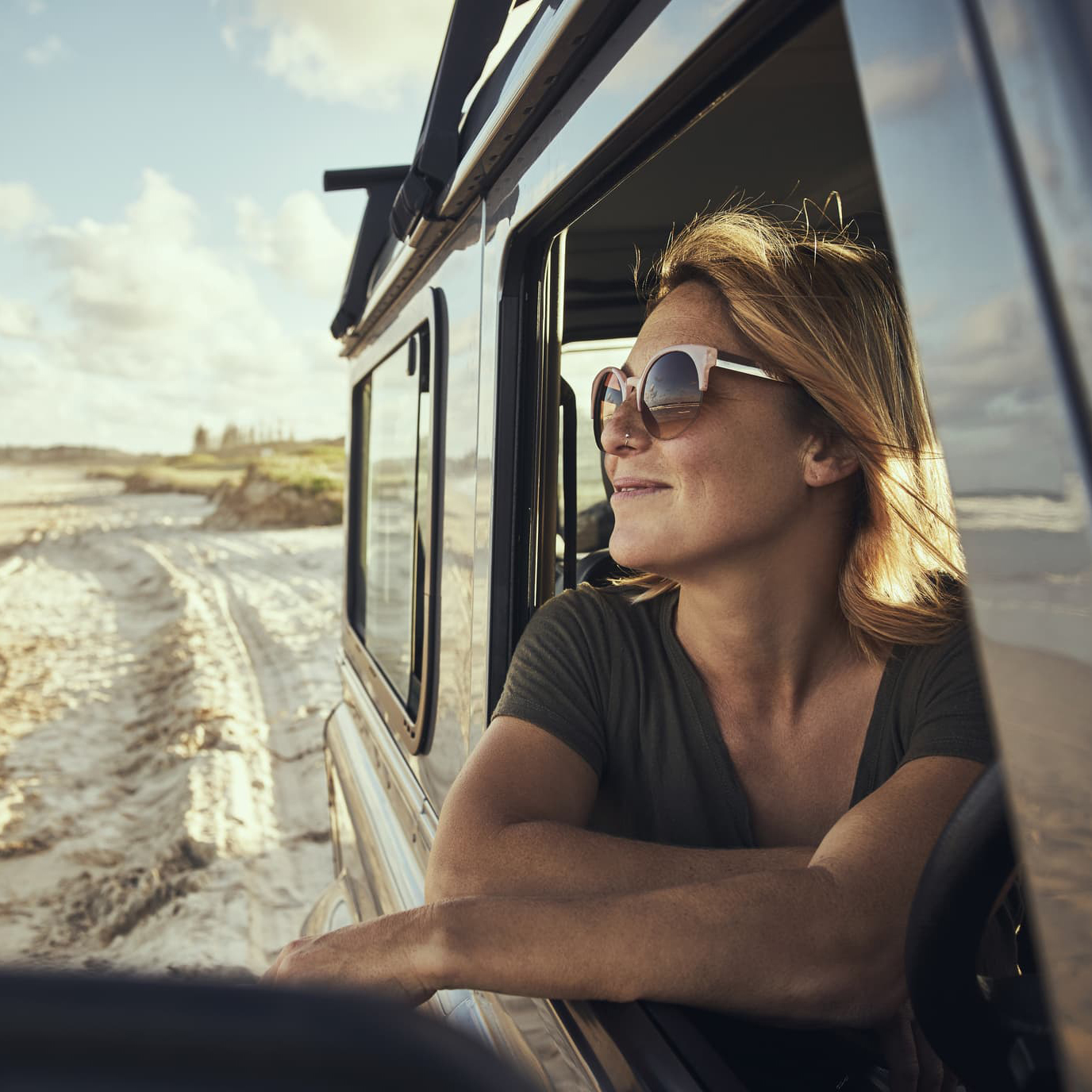
Lucy - Australian

Janssens family - Belgian

